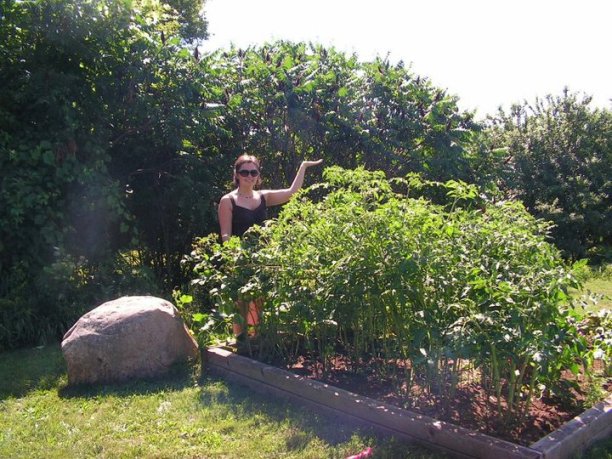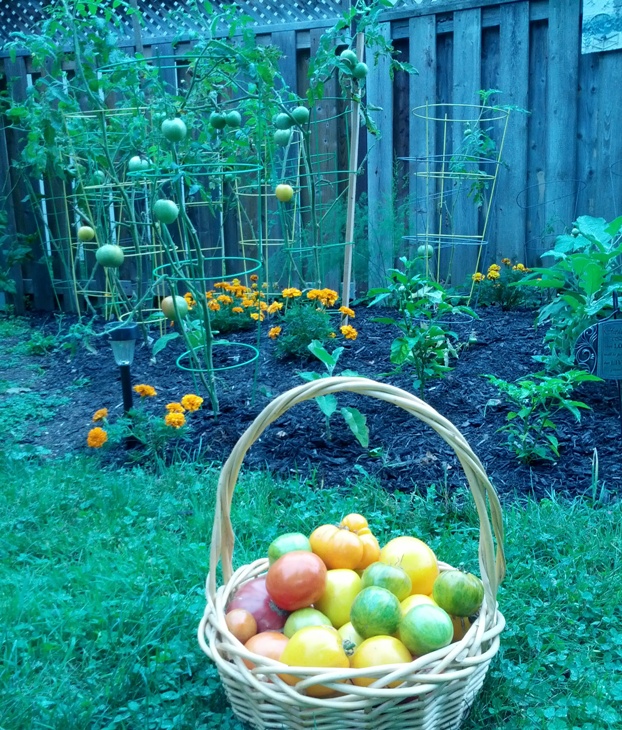I hopped into my car before it began to rain.
The dark clouds nearby did not deter me from packing up my gardening gear and heading to my garden plot a few kilometers away. The anticipation of planting my garden excites me every year.
You see, I have always planted a garden of some sort, even if it’s just herbs, no matter where I’ve lived. But this year, because I’ve been renting a house while its family is away on a trip and needing to move in the middle of summer, I am not able to plant or maintain a garden where I’m presently living. Thus, I decided that a plot at a community garden would be a great option for myself and anyone who doesn’t have their own outdoor space.
As I drove, it began to rain. I considered turning around and going home, but the gardening still needed to be done, so I kept driving. Rain or shine I had to go.
As the rain pounded on my windows, with my wipers at maximum speed, I became overwhelmed with a sense of gratitude for all farmers. The amount of attention, care and love for growing the food we all consume astounds me.
How have we become so lost?
So many of us purchase fresh produce at a mega chain grocery store, and hardly ever think about who grew it, how it grew, and all the devotion it took to produce it. Whether the produce is from a large-scale factory farm, a small farm, or a local greenhouse, many of us do not think about the effort put into growing food. And that is part of the problem. We have lost connection with how our food grows. Many of us don’t get our hands dirty with soil, nor do we race home to water plants on an exceptionally hot day. For many of us, food is simply available and we are completely removed from the process. And that bothers me.
It bothers me because there is so much food waste, excessive consumption, and an incredible detachment from reality—which is that vegetables are plants that grow in dirt. And many are fertilized with manure or toxic chemicals.
What we choose to purchase, and where we spend our money is our choice. But it’s important to remember that purchasing items acts like a vote. We can “vote” for organic vegetables with each purchase we make. The more we buy, the more farmers or companies know what is in demand and they can respond by producing more of the items we want. Purchasing items grown halfway around the world is an individual decision, but it’s important to consider whether the produce is grown in our own country and purchased locally instead—within your province or state, or even better, around your hometown.
For every $100 we spend at locally owned businesses, $68 will stay in the community. This is a far contrast to $43 staying in your community when you spend $100 at a national chain.
Wasting food, like letting vegetables rot, is something most people who grow their own food do not do. I could not imagine letting the produce I worked so hard to grow simply rot away. Growing your own food changes your perspective on food, both in terms of production and consumption. It takes a long time for food to grow, and for many vegetables, the seeds must be collected and replanted yearly in order to replicate the same food. Once the seeds have sprouted, great attention to lighting, water, and pests is needed. This all requires great time and effort. Growing your own food enables one to realize exactly what goes into producing it and can truly change a person’s food waste habits.
This is why people are so proud of growing their own produce—it shows that their time and commitment has paid off. All of the time spent watering, picking off dead leaves and mitigating pests have produced a yield of fresh food. No gardener I know would use half a cucumber and let the other half rot in the fridge.
I am no expert farmer by any means, but I do grow my own vegetables each summer. Having lived in a gardening five zone and now living in a gardening three zone has really helped to open my eyes to the struggles of growing in different climates and geographic regions.
Where did we as society lose touch with this ancient concept? I have partial answers, such as the industrial revolution and commercialism, as well as the global economy, but for argument’s sake, I won’t go there. This is about education. It is up to us, as individuals to set the precedent for the future. Therefore, I encourage you, all of you, to support your local farmers, grow your own garden, or at least buy organic foods at the grocery store. Make educated decisions and please don’t let our heritage, our survival, go by the wayside.
What are you waiting for?

Understanding that everyone has their own food preferences, here are some tips to help you get started growing your own food:
>> Find your grow zone—knowing this will help determine what plants will thrive where you live (because unfortunately, even though I love avocados and pineapples, I cannot grow them in my gardening zone). Type “grow zone” and your location into Google. It’s that easy!
>> Discover which plants thrive in your grow zone. As mentioned above, some grow zones are better for growing certain crops than others.
>> Decide which plants, from the best suited plants for your zone, you’d like to grow. There is no point growing potatoes if you don’t like them.
>> Start small. Purchase seeds or a plant from your local greenhouse and plant it with nutrient-rich soil in a planter pot on your balcony or in a window box.
>> Take care of your plants. Make sure that your plants get enough sunlight and water, as they need to thrive. Not all plants want to be in the sun all day long, while other plants need full sunshine.
>> Water. It is also important to water your plants daily, especially plants like tomatoes, cucumbers, and peppers, which grow their yields above ground. Plants need a lot of water to thrive, and prefer lukewarm water over cold, so keep a jug or two filled at all times. This will ensure that the temperature of the water adjusts to its surroundings, and won’t “shock” the plant (like cold water does).
>> Have patience. Like many things in life, growing your own food takes time. Be patient, and keep tending to your plants. Your efforts will be worth it in the end.
>> Harvest as needed. Many fruit or vegetables will not be done growing all at the same time. So if you are growing beans, you will need to pick the pea pods that look like they’ve reached maturity, and pick more pea pods a few days later. It is a continual process until the plant is done producing food.
>> Reap your rewards and enjoy! Harvesting your own food is so liberating. If you foresee that your tomato plants will have a high yield, you might want to plan a tomato canning or salsa party. Invite your friends over to assist with these tasks, or prepare little garden boxes to give to friends or coworkers.
If you cannot grow your own food, you might want to consider purchasing organic produce from a CSA (Community Supported Agriculture) or at your local Farmers’ Market.
Arriving at my garden plot, the rain began to come down hard. I took a moment to look at the plots in front of me, all newly planted with so much potential. A huge smile emerged on my face before I grabbed my gloves and hopped out of the car. Knowing that I am part of a culture that supports local farmers and the economy is something that I simply cannot buy at a mega chain grocery store.
Author: Meghan Alton
Images: Courtesy of Author
Editor: Catherine Monkman; Caitlin Oriel







Read 3 comments and reply